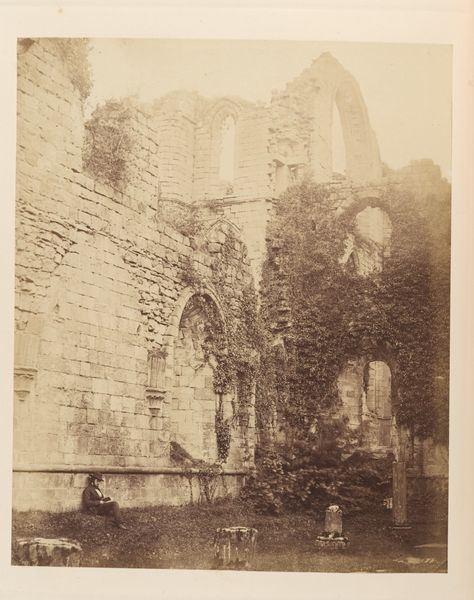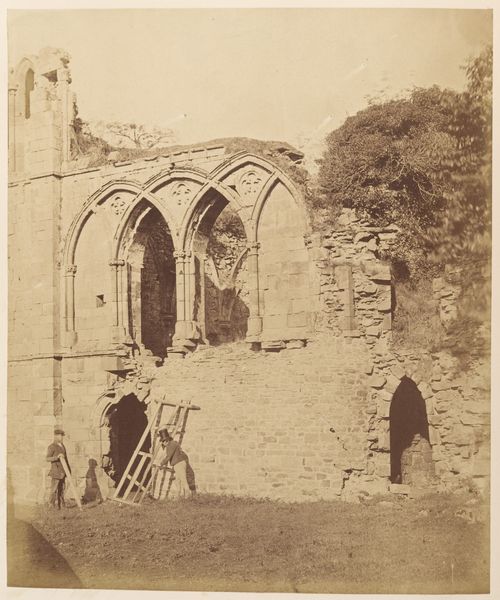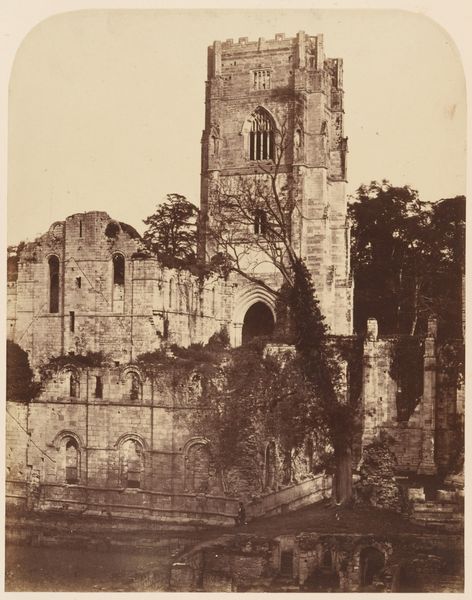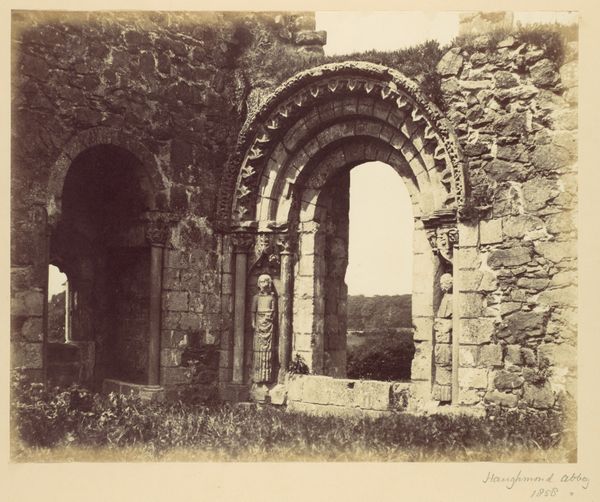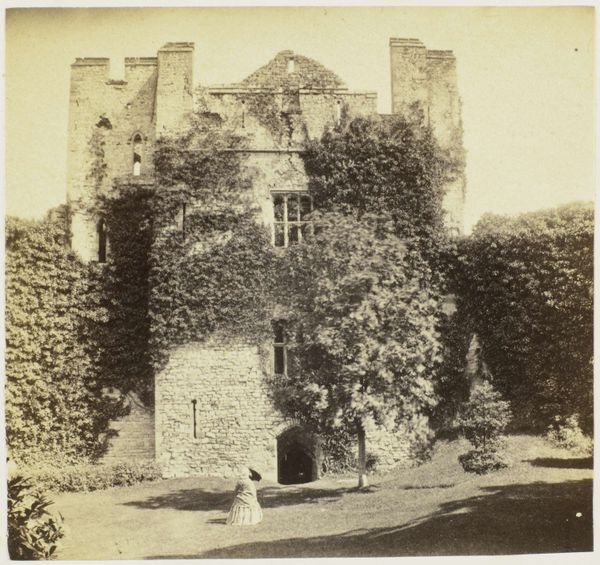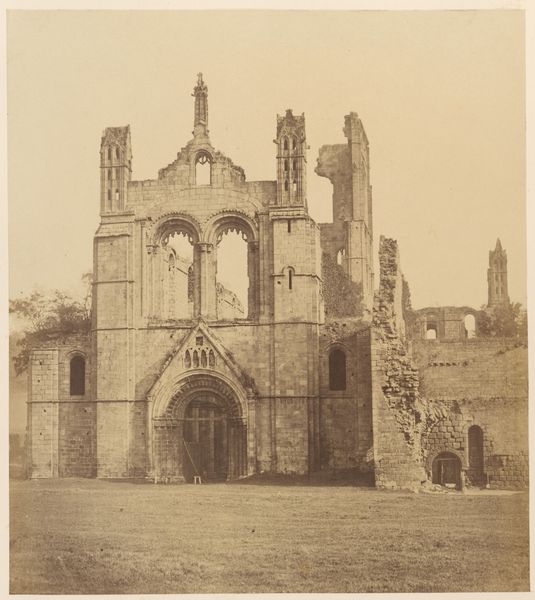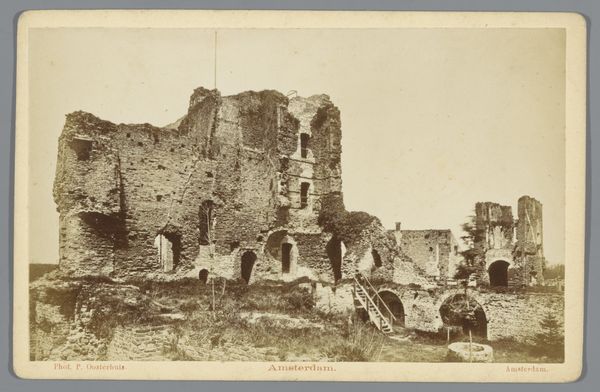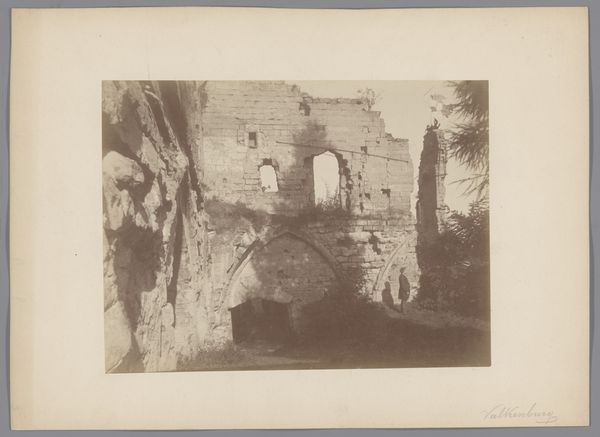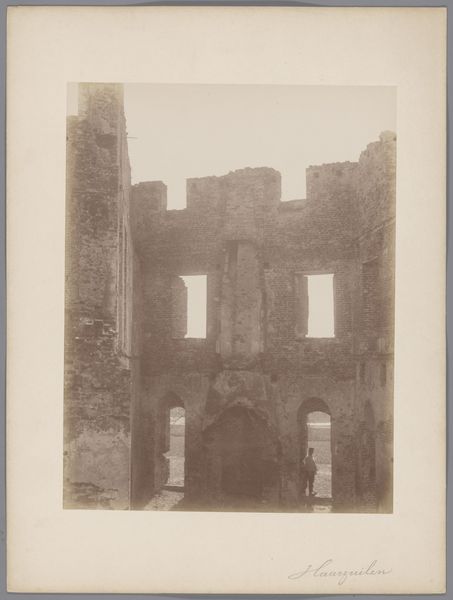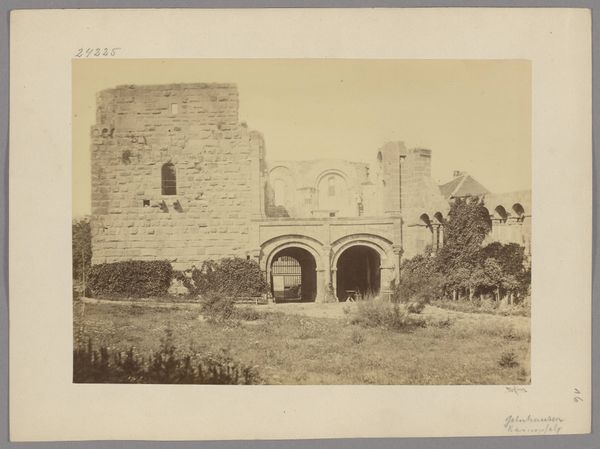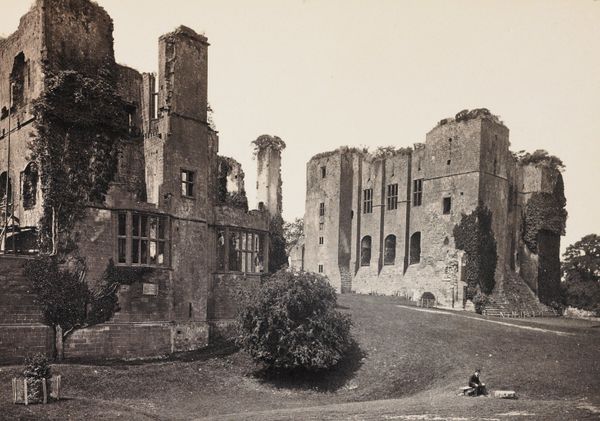
Dimensions: Image: 28.1 x 23.4 cm (11 1/16 x 9 3/16 in.) Mount: 43.9 x 30 cm (17 5/16 x 11 13/16 in.)
Copyright: Public Domain
Curator: What a wonderfully evocative image. We're looking at "Easby Abbey. From the East," a gelatin silver print created in the 1850s. Editor: It’s beautiful and melancholic! The sepia tone drenches the ruins, and it makes the structure look like a crumbling memory. It reminds me of those hazy recollections of half-remembered histories. Curator: Cundall expertly utilizes the photographic medium here to engage with the Picturesque and Romantic movements, framing the ruins as both beautiful and sublime in their decay. Notice how the textures, from the stone blocks to the tangled foliage, are sharply rendered. Editor: Absolutely! And the placement of the figures...they are practically swallowed by the grandeur of the Abbey. It makes you think about how transient we are against the march of time, how these ruins have seen centuries. They add a sense of scale and quiet drama. Curator: The Abbey is an excellent example of architecture representing temporality and a constant state of flux. Look closely at how Cundall uses the light, which cascades and plays across the Abbey’s facade, it almost feels like it is trying to breathe new life into the subject. Editor: It definitely works. The Romantic in me loves that the site is half claimed by nature; ivy snakes up the walls, blurring the crisp lines of the architecture. Do you think he selected the viewpoint based on that contrast? It creates a haunting yet stunning visual statement. Curator: It's highly probable, given that compositions during this time leaned towards a celebration of wilderness intertwined with humanity's creations. The photograph serves almost as a symbolic meditation, I think. It acknowledges that all great human structures inevitably yield to the elements. Editor: It really resonates. Looking at this image, I think it's a beautiful invitation to reflect on the past, present, and future—woven into stone and silver. Curator: Indeed, and a powerful example of the capacity of early photography to connect us to historical landscapes.
Comments
No comments
Be the first to comment and join the conversation on the ultimate creative platform.
